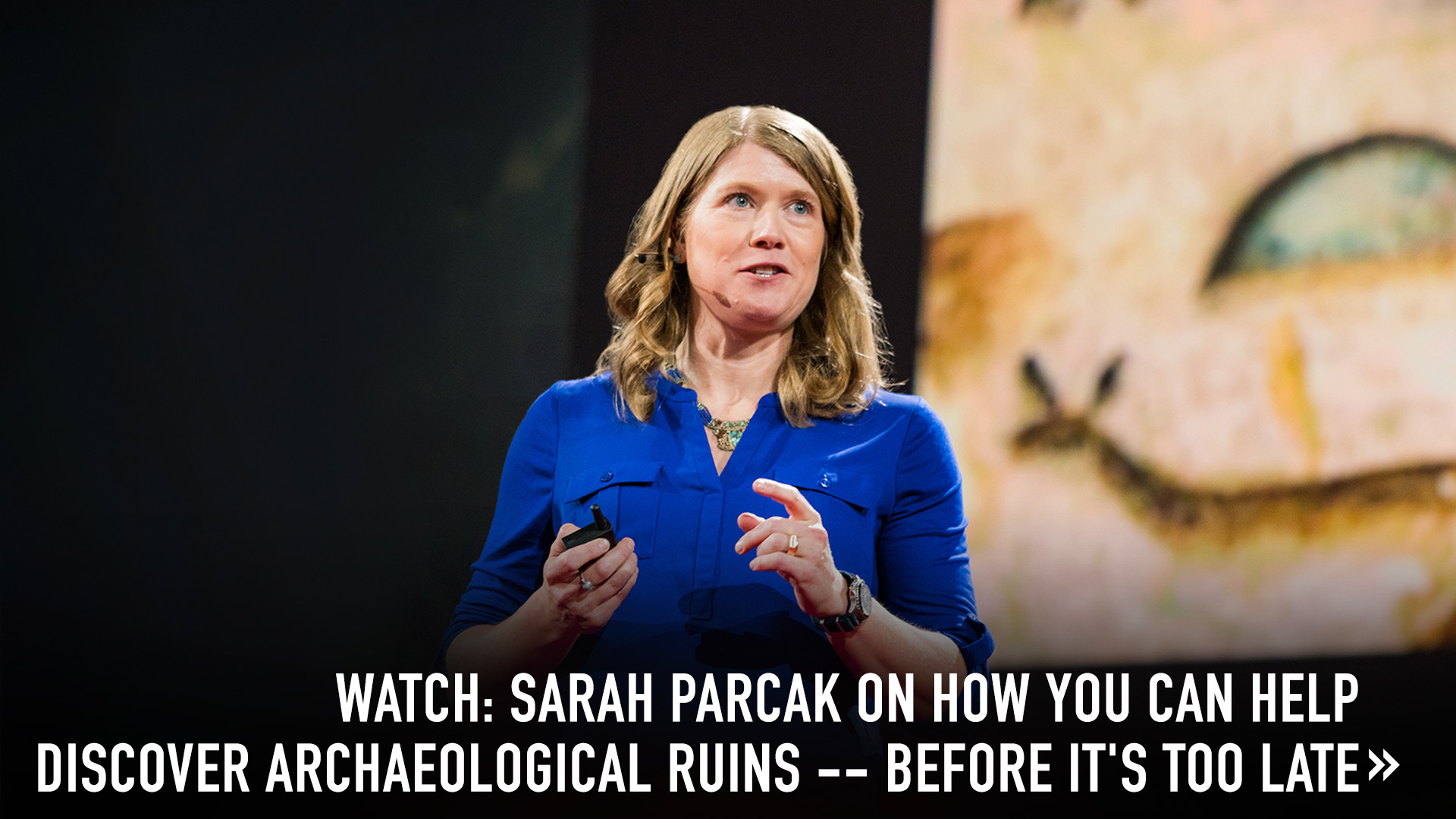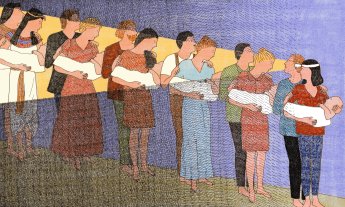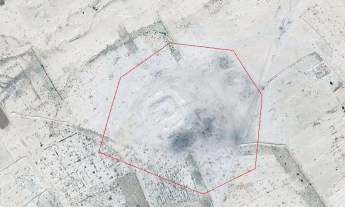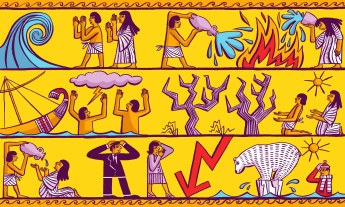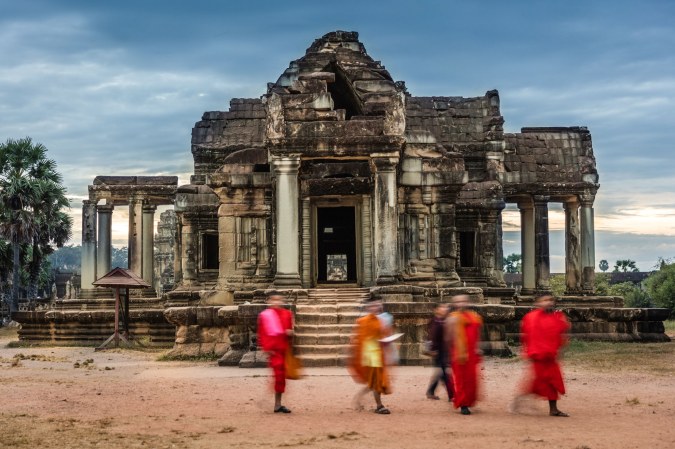
Space archaeologist Sarah Parcak highlights 4 thrilling recent finds — and shows us how we can safeguard ancient sites with GlobalXplorer, her new online citizen science platform.
Archaeologists worship at the temple of possibility. We travel thousands of miles and dig for years under hot suns, hoping to discover something that will help us unravel the mysteries of the past. I can attest that when your trowel finally strikes something, time stands still — the past and the present collide, and the thrill of discovery courses through you.
In our Google Mapped world, it’s tempting to think everything significant out there has already been found. That is not the case. All over the planet, my colleagues are using new technology to discover amazing things. These finds are rewriting our history, showing us that humans lived bigger and more boldly than we ever imagined. Here are my picks for the most intriguing discoveries of 2016.
Countless visitors have explored Angkor Wat in Cambodia for centuries, without realizing that a vast maze of humanity once existed around the site. My colleague Damian Evans studied the surrounding terrain using LIDAR technology — his team scanned an area of more than 700 miles, sending down laser pulses from a helicopter to “see” through the vegetation. In June they revealed what they found: multiple medieval cities hidden on the forest floor. The cities are estimated to have been built between 900 and 1,400 years ago, and they’re huge, comparable in size to Cambodia’s modern capital, Phnom Penh. These cities suggest that the Angkor Empire was much larger than previously thought — possibly the largest empire in the world in the 12th century.
At Must Farm, near the town of Peterborough in the UK, an archaeological team has found a level of preservation on par with Pompeii. It’s rare to find organic materials at ancient sites, because they decompose with exposure to air and water. However, at this site, they’ve identified five circular houses — each built on stilts raised above the wetlands — which apparently burned down just months after they were built. The burned homes sank into the bog where silt blocked out the air. Researchers here have unearthed balls of knotted twine, even porridge and barley dating back 3,000 years — still in bowls. Other objects included buckets, jars, swords and spears, as well as high-quality textiles made from flax, nettle and lime-tree bark, woven from thread as fine as human hair, and glass beads, crafted in the Mediterranean or Middle East and showing a connection to global trade. Two of the latest, greatest discoveries at Must Farm were a wheel about three feet in diameter — the earliest, largest and most well-preserved of its kind in the UK — and horse bones, which suggest the residents might have travelled by cart. The exciting implication: that people in the Late Bronze Age led a far more sophisticated life than we believed.
For centuries, historians have wondered about Jesus’s tomb: is it inside the Edicule shrine at Jerusalem’s Church of the Holy Sepulchre, as long believed? Even if this was indeed the original burial place, the site has gone through unthinkable transformations over the years — Hadrian built a temple there as a show of Roman power, Constantine replaced it with a church, the Sassanid Empire burned it and the Crusaders restored it. To prevent pilgrims from taking pieces of the limestone burial bed, the tomb was encased in marble sometime around 1555. But in October 2016, conservationists from the National Technical University of Athens removed the marble plate covering the tomb. Part of a larger effort to reinforce and restore the Edicule from water damage, the procedure had to be done with incredible care and speed — in only 60 hours. Just before their window of work closed, researchers found the original burial bed under a layer of debris. Early accounts reported that Jesus was buried in the family tomb of Joseph of Arimathea, a wealthy Jewish follower, and the findings appeared consistent with that. While the tomb has now been resealed in marble, the data from the excavation should provide scholars with years of material to study.
A duo of fascinating discoveries in Belize has added to our knowledge of Maya civilization. At the site of Xunantunich, Kathryn Brown and her team spent the month of July 2016 excavating a doorway in the temple of El Castillo. When they opened it, they saw it led to a hidden stairway and chamber, filled with carved and painted symbols dating back 1,300 years. Some of the images were masterful, but others were like chicken scratch. The team came to an intriguing conclusion: the room was divided into sections, and the haphazard markings were actually copies of the skillful ones. Brown believes this was a Maya scribal academy for elites — the Harvard or Yale of its day? — and it may shed light on how Maya scribes learned their art. Nearby, archaeologist Jaime Awe and his team excavated another staircase, which brought them to one of the largest royal tombs found in Belize. Inside were the remains of a muscular man in his 20s, along with jaguar and deer bones and a set of hieroglyphic panels. The panels match, and help fill in, incomplete sets found elsewhere in the country. They appear to tell the story of an ancient dynasty, the so-called “Snake kings,” who ruled the Mayan world in the 7th century A.D.
These are just a few of the incredible discoveries made in the past year — but in the same period, acts of unthinkable destruction have also taken place. On January 20 2017, we learned that ISIL had blown up two more iconic monuments at the site of Palmyra in Syria; days later, 75 people were arrested in Europe for trafficking in archaeological relics. We’re in a race against time. There may be hundreds of thousands, maybe millions, of ancient sites around the world that we don’t know about, and they’re in danger every moment that they remain unsecured.
You can help archaeologists by using one simple tool: satellite imagery. I am a space archaeologist — my team and I take high-resolution satellite images captured hundreds of miles above the earth’s surface and analyze them to discern patterns in the vegetation and soil below that might signal manmade features otherwise hidden from view. But we can’t work fast enough, so we’ve created GlobalXplorer.org. It’s a citizen science platform, built with the 2016 TED Prize and the help of the National Geographic Society and DigitalGlobe, that trains people to search small tiles of satellite imagery for signs of looting and unsecured sites. Anyone with a computer, a keen eye and free time can join in.
Our first campaign focuses on the highlands and deserts of Peru. As GlobalXplorers identify looting, the data will be passed along to Peru’s Ministry of Culture and to on-the-ground partners, who will create plans for protection and excavation. I can’t wait to see what users discover and what new clues to the mysteries of our past will be found. Start exploring, and who knows? Maybe you’ll help make the next big discovery.

